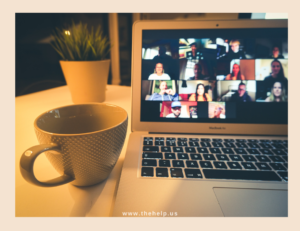
Are you tired of feeling exhausted after a long day of video meetings? Well, you might be experiencing what’s known as “Zoom Fatigue.” Yes, it’s a real thing! But don’t worry, you’re not alone. Let’s dive into what Zoom Fatigue is, how it relates to hybrid work, and what’s being done about it three years after the pandemic.
Zoom Fatigue is a term that emerged during the COVID-19 pandemic when virtual meetings became the new norm. It refers to the feeling of tiredness, burnout, and mental exhaustion that people experience after extended periods of video conferencing. Although video calls allowed us to stay connected during lockdowns, they also brought new challenges.
So, how does Zoom Fatigue relate to hybrid work? As we transition into a post-pandemic world, many companies are adopting hybrid work models, where employees split their time between working remotely and in the office. While this provides flexibility, it also means more video meetings. As a result, people may find themselves juggling between in-person and virtual interactions, leading to additional fatigue.
Recent studies have shed light on this phenomenon. A study conducted by Stanford University in 2021 revealed that Zoom Fatigue is real and affects people’s well-being. The researchers found that excessive eye contact and the constant need to be “on” during video meetings can drain our energy. Moreover, the absence of non-verbal cues and the inability to fully relax in a virtual environment contribute to the exhaustion.
- To combat Zoom Fatigue, companies and individuals are exploring various strategies. For instance, some organizations are implementing “Zoom-free” days or specific time blocks without meetings to give employees a break from virtual interactions. This encourages a better work-life balance and reduces burnout.
- Researchers also suggest incorporating more asynchronous communication methods, like emails or collaborative platforms, for non-urgent discussions. This allows individuals to manage their time more effectively and reduces the pressure of immediate responses.
- Another approach is to encourage shorter, focused meetings. Instead of defaulting to a full hour, consider scheduling 25 or 50-minute sessions to provide a buffer between meetings and allow for much-needed breaks. Remember, breaks are essential for maintaining productivity and preventing fatigue.
- It’s important to optimize the virtual meeting experience. Encourage participants to turn off their cameras when not speaking to alleviate the pressure of constant visual attention. Utilize screen-sharing and collaborative tools effectively to keep meetings engaging and interactive.
- Outside of work, finding ways to disconnect from technology is crucial. Engaging in hobbies, exercising, and spending quality time with loved ones offline can help rejuvenate your mind and body.
Zoom Fatigue is a real challenge that many people are experiencing as we adapt to the hybrid work model. However, awareness of this issue has led to proactive measures to mitigate its effects. By implementing strategies such as Zoom-free days, shorter meetings, and optimizing virtual interactions, individuals and organizations can combat Zoom Fatigue and promote a healthier work-life balance.
So, next time you’re feeling drained after a video meeting marathon, remember to take a breather, switch off those cameras, and give yourself some well-deserved offline time. Your mind and body will thank you for it.
How do you cope with Zoom Fatigue? Share your tips with us in the comments. Remember to work smart and be a blessing to someone today. Stay safe and healthy!
Written by Jaie O. TheHelp